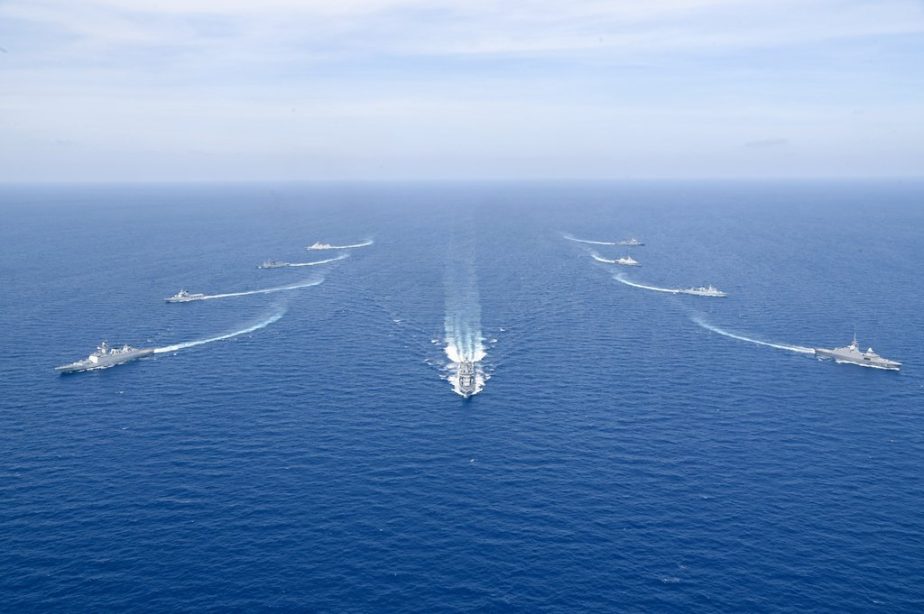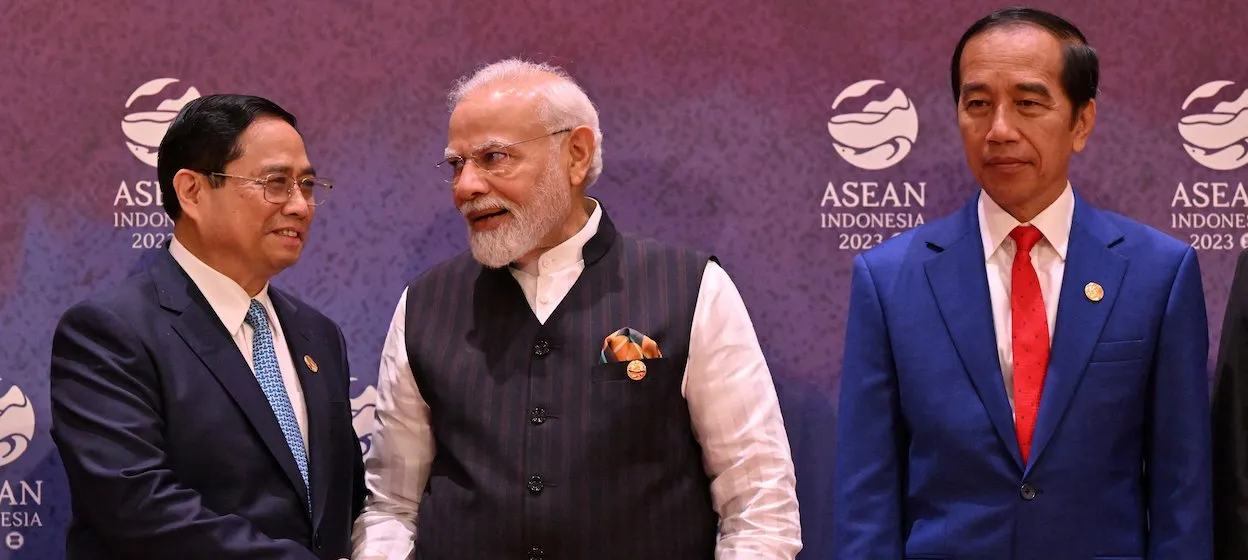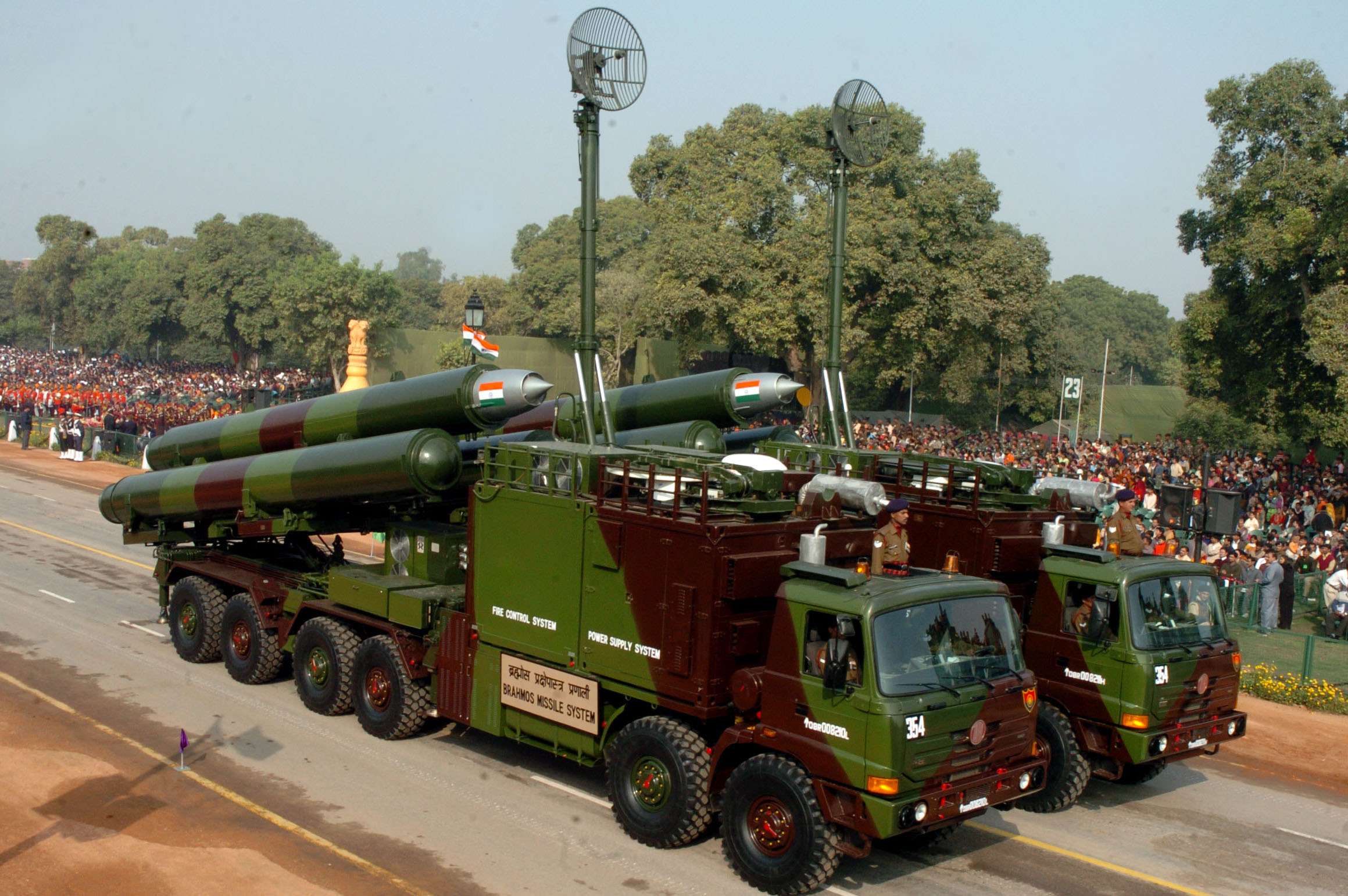India, ASEAN Hold First Maritime Exercises
THE DIPLOMAT
APLN member Rajeswari Pillai Rajagopalan writes on the first India-ASEAN maritime exercise and points out that India has long used its navy to build ties with maritime nations in the Indo-Pacific, but this exercise steps up collaboration by tying up with ASEAN as a group. Read the original article here.
India and ASEAN enhanced their maritime cooperation with the inaugural ASEAN-India Maritime Exercise (AIME) from May 2-8. India has long used its navy to build ties with maritime nations in the Indo-Pacific, but this exercise steps up collaboration by tying up with ASEAN as a group. ASEAN is an important strategic partner and India has for decades sought closer ties with the Southeast Asian region. Along with the Indian Navy, the navies of Brunei, Indonesia, Malaysia, the Philippines, Singapore, Thailand, and Vietnam participated in the exercise.
According to an Indian Ministry of Defense press release, INS Satpura and Delhi took part in the AIME 2023. Both ships are part of the Indian Navy’s Eastern Fleet based in Visakhapatnam in southern India. The two ships are also indigenously built, INS Delhi being India’s first indigenously-built guided missile destroyer. INS Satpura is a 6,000-tonne, Shivalik-class stealth multirole frigate produced locally in India. It is considered to be an improved version of its predecessor Talwar-class frigates, equipped with better stealth and land attack features. Both ships enjoy state of the art weapons and sensors.
Along with the two ships, Indian maritime patrol aircraft P8I and integral helicopters also took part in the exercise. Admiral R. Hari Kumar, chief of the naval staff (CNS), was in Singapore and visited the two Indian ships. He told all the participating personnel “to utilize the opportunity provided by AIME to refine procedures, learn best practices, and enhance interoperability with the ASEAN navies.”
This first ASEAN-India maritime exercise was co-hosted by the Indian and Singapore navies. The Singapore Navy sent its Formidable-class frigate RSS Supreme for the exercise. According to a Singapore Navy press release, AIME 2023 involved nine ships, six aircraft, and more than 1,800 personnel from across ASEAN member countries. The harbor phase of the exercise was held at Changi Naval Base from May 2-4, followed by a sea phase in the South China Sea from May 7-8.
The exercise was aimed at creating opportunities where the two sides can work together in a seamless manner in the maritime domain. During the first phase of the exercise, navy personnel participated in professional exchanges in visit, board, search and seizure, as well as humanitarian assistance and disaster relief (HADR) operations.
The second phase involved various maneuvers including “helicopter cross-deck landings, as well as maritime security, communication, and maneuvering exercises.” The exercise also included simulating scenarios tracking “the movement of simulated vessels of interests” supplemented with information from the ASEAN International Liaison Officers attached to the Singapore Navy’s Information Fusion Center (IFC). These are seen as essential in establishing rapid maritime security collaboration. The AIME also worked on the Code for Unplanned Encounters at Sea (CUES), which is a maritime confidence-building measure intended to build trust and confidence, thereby bringing down the possibilities of inadvertent incidents in the maritime domain.
ASEAN countries, as well as India, have been concerned about China’s aggressive actions in recent years. Even in the middle of the pandemic, as the region was reeling from the severe health crisis, China was meddling with its South China Sea neighbors, with repeated intrusions into the Indonesian Exclusive Economic Zone, as well as confronting Malaysia, the Philippines, and Vietnam. India-China relations plummeted to an all-time low following the Galwan clashes in the summer of 2020. That ASEAN and India decided to conduct a maritime exercise against this backdrop is significant on its own, irrespective of the complexity of the exercise.
China could not have missed the message. According to Indian sources who spoke to Reuters, the exercise that was being held in the Vietnamese Exclusive Economic Zone was followed by Chinese maritime militia boats, which “moved towards them.” But the navy ships and the militia boats “crossed each other without any face-off.” The Indian officials who spoke to Reuters also noted that “Indian authorities were tracking the movements of at least five militia boats… A Chinese research vessel was also following these boats towards the same area.”
While responding to a query from Reuters on the incident, China’s Foreign Ministry “dismissed accusations that boats belonging to a Chinese maritime militia had deliberately approached an area of the South China Sea” where the maritime exercises being held. The ministry said, “As far as we understand, Chinese fishing and scientific research vessels carry out normal production and work activities in maritime areas under China’s jurisdiction… The outside world should not make groundless accusations or make trouble out of nothing.”
Given the continuous military and diplomatic push from China against both ASEAN and India, both sides will likely continue to find ways to strengthen their defense cooperation, as a way of deterring or moderating China’s aggression across the Indo-Pacific maritime spaces. India is also mindful of enhancing its Act East engagements in the ASEAN region, and AIME 2023 is thus a win-win for both India and ASEAN.
Image: Twitter / @indiannavy




